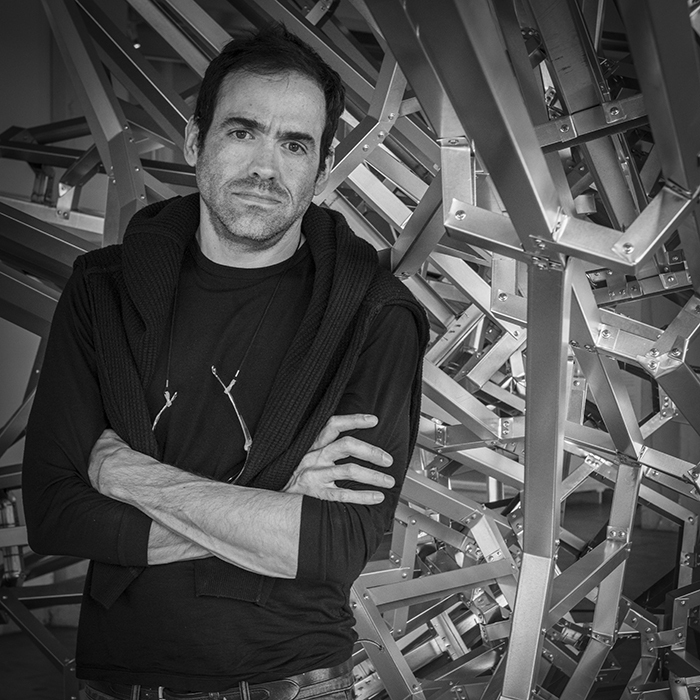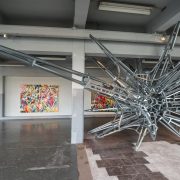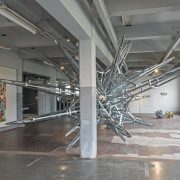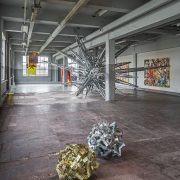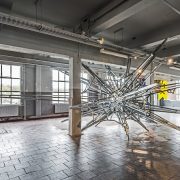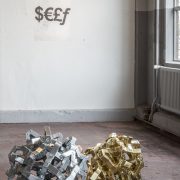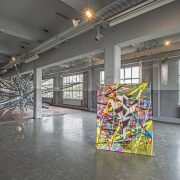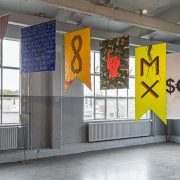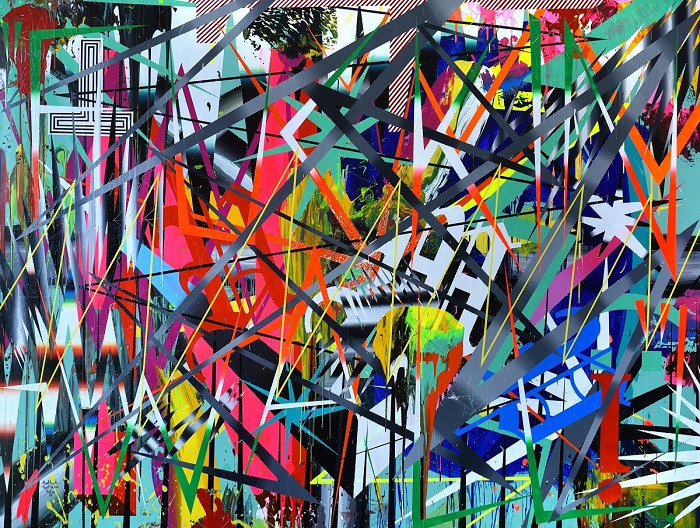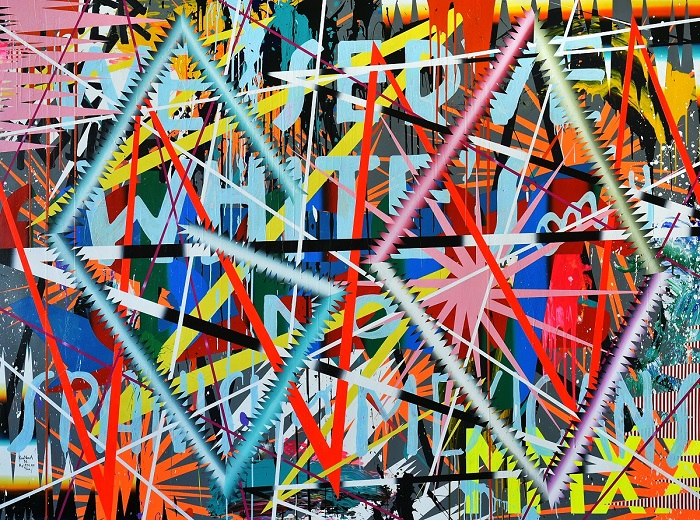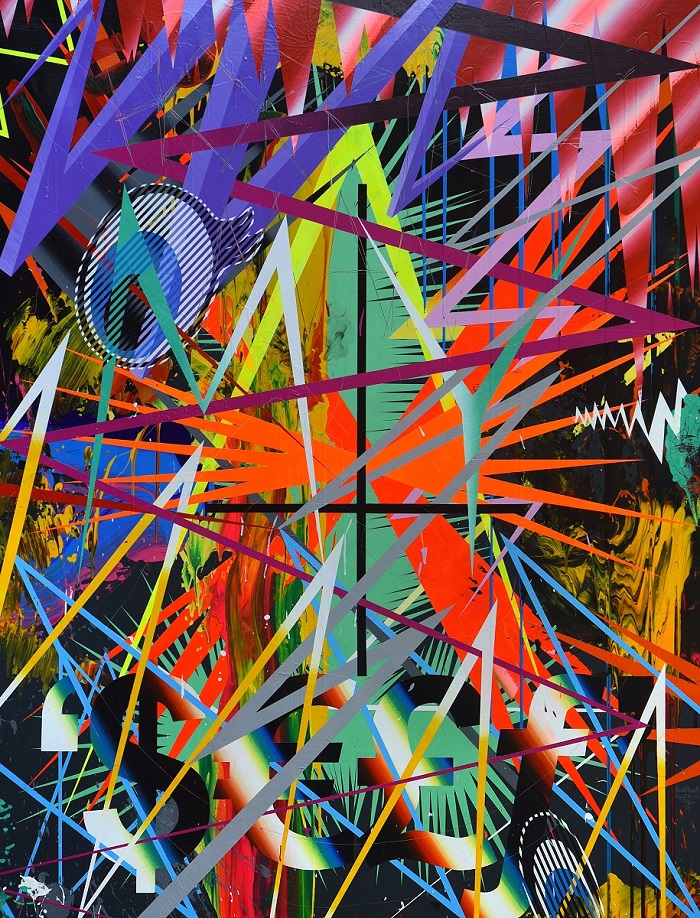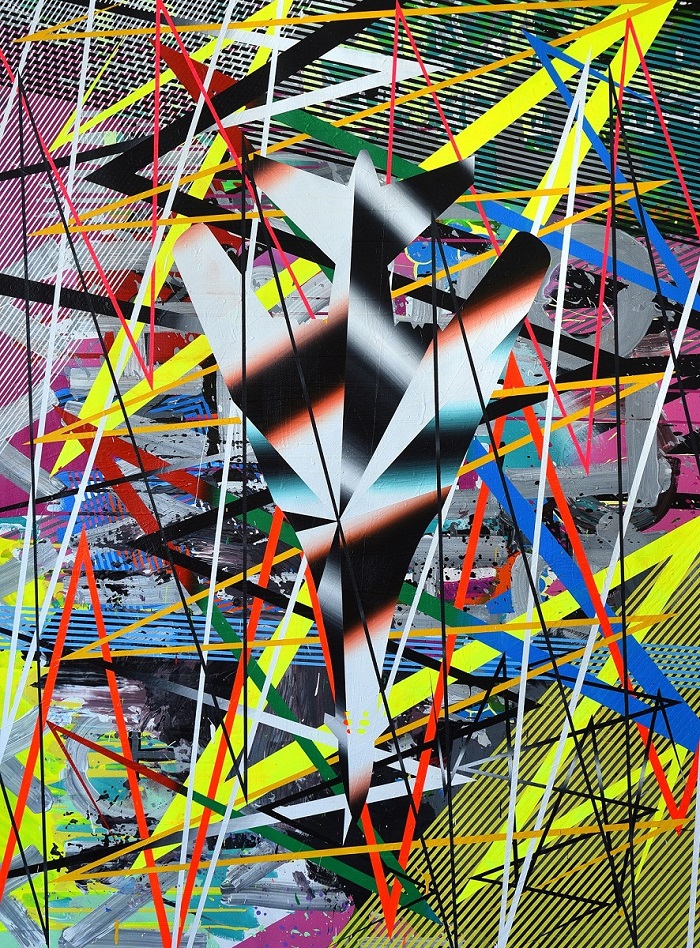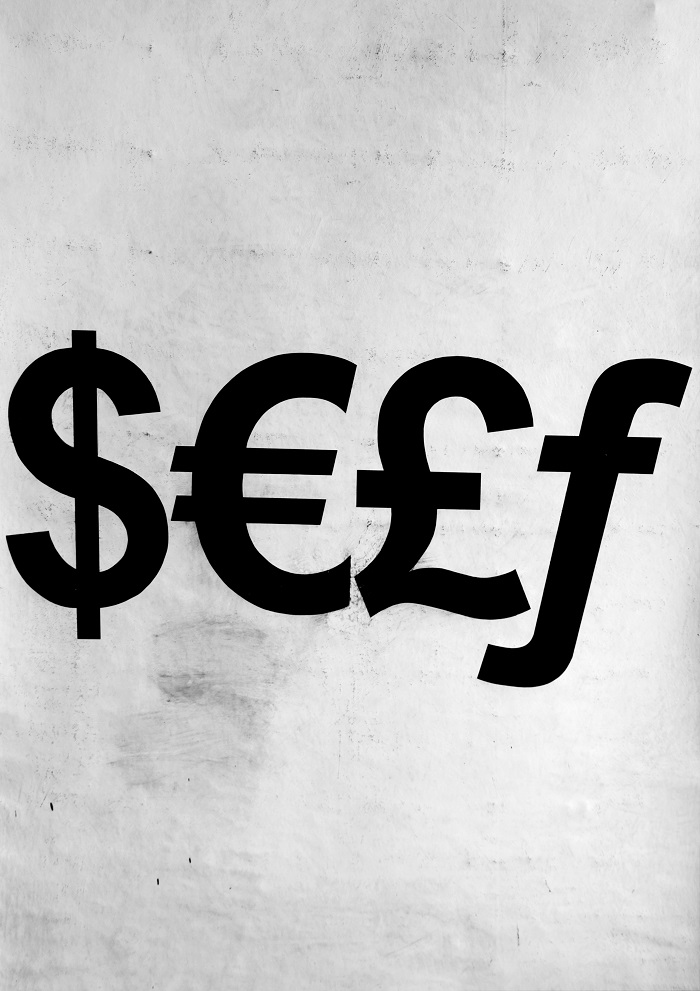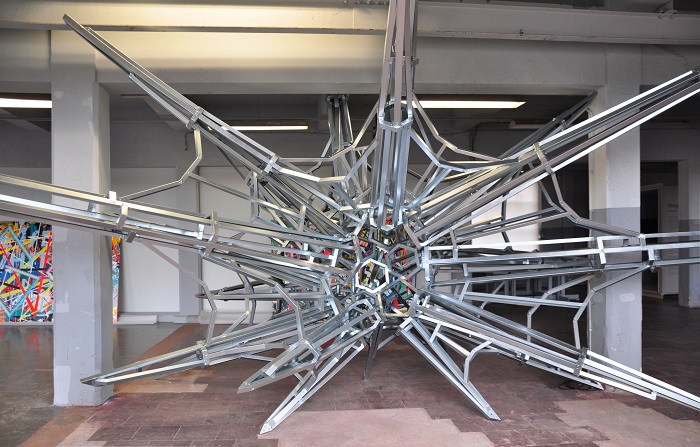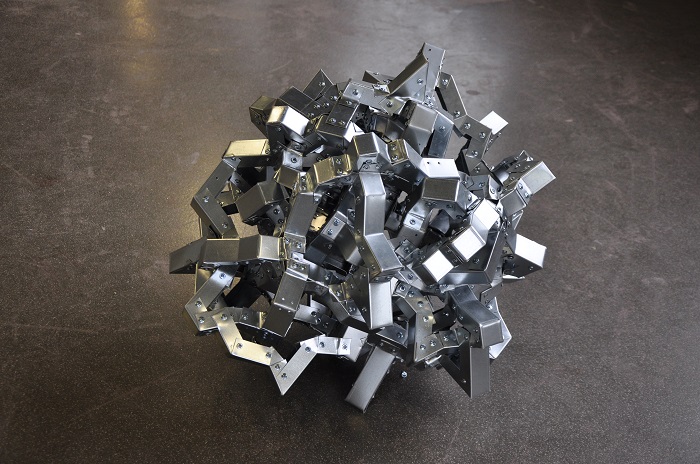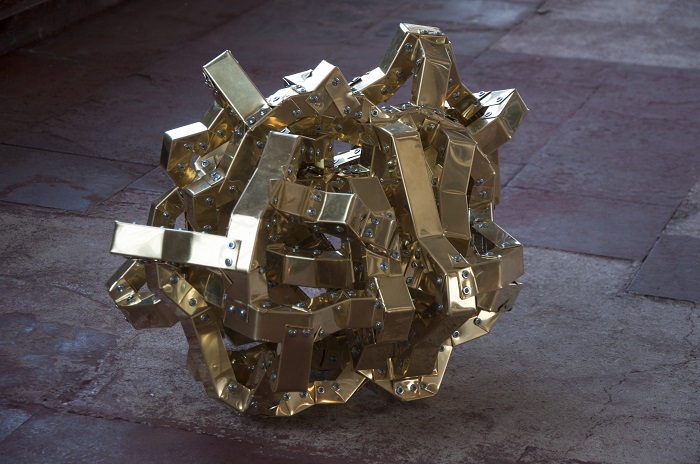Description
Daniel Ruanova – Translocating Borders
The Mexican artist Daniel Ruanova (1976) comes from a different world and a different culture, a world with urgency and where survival takes time. Death is an integral part of his culture, not only because of the drugs wars, political instability and poverty. As Ruanova himself explains: ‘if you do not embrace death, it will haunt you’. Death and life are inextricably linked with each other and are a part of nature. When a coyote grabbed and ate a calf on his grandfather’s ranch, the very same place in the desert landscape was marked the following year by flowers that had started growing there.
Nature is also a source of inspiration for the defensive constructions that Ruanova makes. The structures, made from modular wall profiles, are created according to the mathematical logics of nature. We now produce these U-profiles ourselves, because the profiles used in Europe proved to be unsuitable. The way in which this structure is built up organically is the same as how a cactus grows and occupies space.
Ruanova has gathered an incredible wealth of knowledge and has developed a feel for the possibilities of using steel construction materials to let a structure grow organically. The structure protects the essence, but is simultaneously also sharply daunting.
According to Ruanova, the art world is changing and he, as an artist, can therefore change this world: his existence as an artist is urgent. Just like a cactus in the desert, he is a part of Mexico – a child of his country – and in everything he does, he breathes and communicates the care, love and unwavering trust in his origins and the future.
He currently lives in Tijuana, a city on the border between Mexico and the United States. Violence and social tension are quite commonplace here. In recent years Ruanova has used his new project ‘New World Border’ to focus on the generation of an increased awareness of border cultures.
The current anti-Mexican political climate in the United States also has a positive side, according to Ruanova. It has led to the fortification of the Mexican culture and a growing self-awareness, which in turn has created new opportunities. As there is growing tension along borders all over the world, and Ruanova’s work transcends local issues due to its contemplative and elaborate nature, his presence with us here in Eindhoven is even more interesting than we thought.
As well as the fact that his work, down to the finest detail, is a result of the consciousness of current affairs and what’s going on in the world, Ruanova also turns out to be an anecdotal narrator and someone who accurately observes his surroundings. Although his sculptures and paintings radiate enormous aggression and give the viewer the impression that he actually wants to shut himself away from the world around him, he actually wants to achieve exactly the opposite. Ruanova is anything but pessimistic. He defines himself as a ‘realist and humanist’, someone who comes from a relatively young culture, in which the future is still open and to which he, as an artist, can have an active contribution.
In stock
HplFN _ FUCKIN WALL, 2017
Acrylic on canvas
257 x 198,5 x 4 cm
P.O.R.
HplFN _ GO, 2016
Acrylic on canvas
257 x 198,5 x 4 cm
P.O.R.
HplFN _ SELF, 2017
Acrylic on canvas
153 x 198,5 x 4 cm
P.O.R.
HplFN _ Peace Dove II, 2017
Acrylic on canvas (double sided)
140 x 198,5 x 4 cm
P.O.R.
SELF, 2017
Print on paper, signed and numbered, ed. 5
59,4 x 80 cm
P.O.R.
T.F.O.P., 2008-2017
Galvanized steel U-profiles and screws
700 x 800 x 400 cm
P.O.A.
SEED I, 2017
Galvanized steel U-profiles and screws
∅ 80 cm
P.O.R.
SEED II, 2017
Galvanized brass U-profiles and screws
∅ 80 cm
P.O.R.
Daniel Ruanova’s thoughts on his artist residency
The making of
This post is also available in: NL
